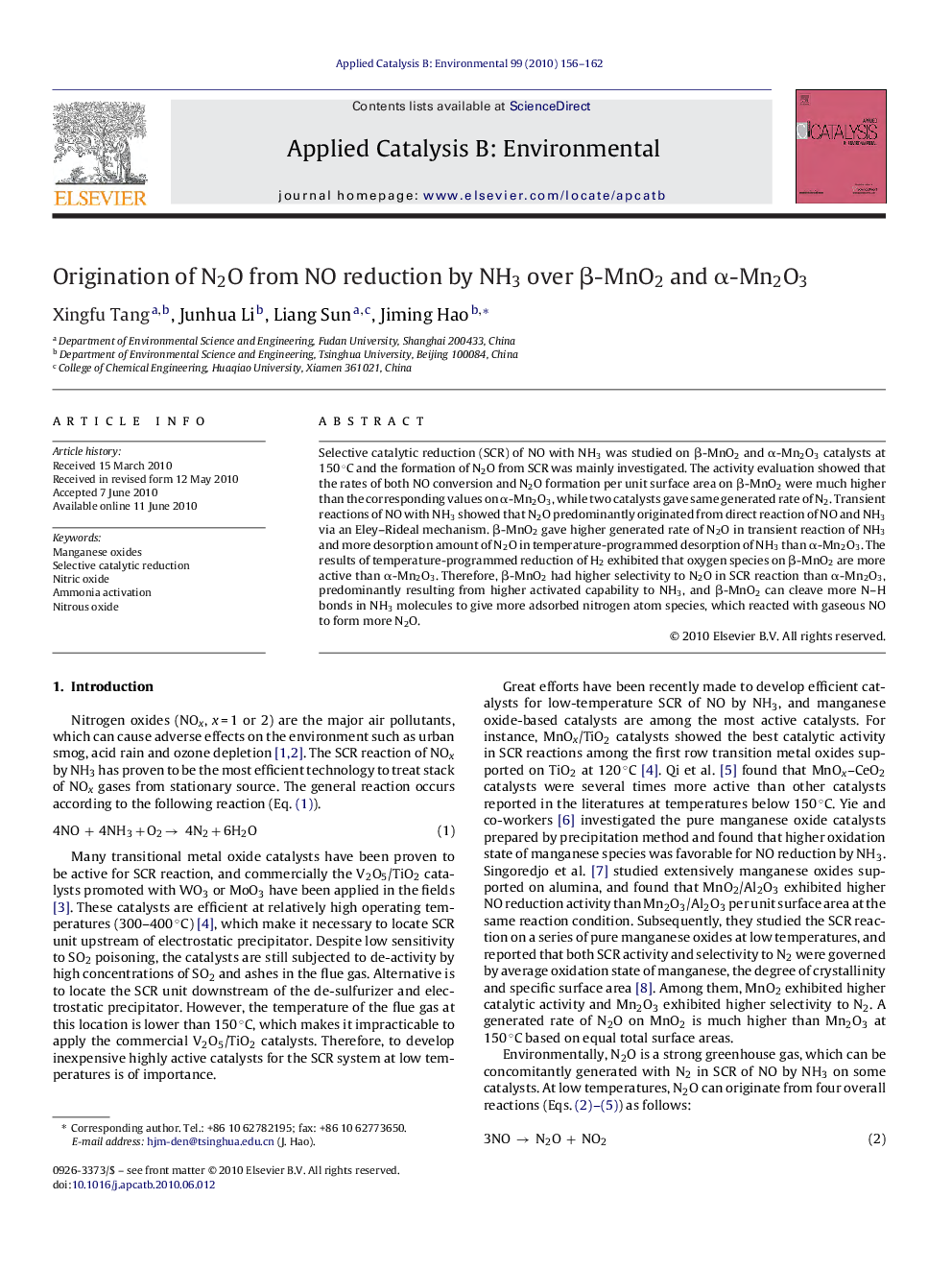| Article ID | Journal | Published Year | Pages | File Type |
|---|---|---|---|---|
| 47222 | Applied Catalysis B: Environmental | 2010 | 7 Pages |
Selective catalytic reduction (SCR) of NO with NH3 was studied on β-MnO2 and α-Mn2O3 catalysts at 150 °C and the formation of N2O from SCR was mainly investigated. The activity evaluation showed that the rates of both NO conversion and N2O formation per unit surface area on β-MnO2 were much higher than the corresponding values on α-Mn2O3, while two catalysts gave same generated rate of N2. Transient reactions of NO with NH3 showed that N2O predominantly originated from direct reaction of NO and NH3 via an Eley–Rideal mechanism. β-MnO2 gave higher generated rate of N2O in transient reaction of NH3 and more desorption amount of N2O in temperature-programmed desorption of NH3 than α-Mn2O3. The results of temperature-programmed reduction of H2 exhibited that oxygen species on β-MnO2 are more active than α-Mn2O3. Therefore, β-MnO2 had higher selectivity to N2O in SCR reaction than α-Mn2O3, predominantly resulting from higher activated capability to NH3, and β-MnO2 can cleave more N–H bonds in NH3 molecules to give more adsorbed nitrogen atom species, which reacted with gaseous NO to form more N2O.
Graphical abstractThe mechanism of N2O formation over β-MnO2 and α-Mn2O3 was studied in low-temperature selective catalytic reduction of NO by NH3, and N2O predominantly originated from direct reaction of adsorbed NH3 with gaseous NO via an Eley–Rideal mechanism. Higher selectivity to N2O over β-MnO2 essentially associated with its lower Mn–O bond energy than α-Mn2O3.Figure optionsDownload full-size imageDownload as PowerPoint slideResearch highlights▶ Higher selectivity of N2O associates with lower Mn–O bond energy. ▶ Lower Mn–O bond energy facilitates the activation of NH3. ▶ N2O originates from direct reaction of NH3 with NO via an Eley–Rideal mechanism.
